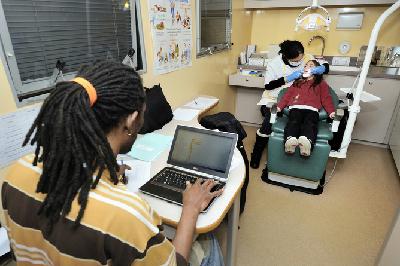Social inequalities in health begin at an early age

To speak of "social inequalities" is to recognize that part of the health gaps we see are due not to natural causes, but to the influence of a number of economic and social factors such as income, lifestyle and access to care.
These differences have been widely studied in adulthood, but they can also be seen from a very early age. Moreover, childhood is a special period in terms of health, first because it is when many habits are acquired, and second because of the long-term risks arising from childhood health problems.
Inequalities start before birth
Long before birth, inequalities linked to the social situation of the parents—particularly the mother—are apparent in the way in which the pregnancy proceeds.
Women with lower levels of education and those with low incomes have fewer antenatal visits than other women. For example, 20 per cent of women with no secondary education have fewer than seven antenatal visits—the regulation number of checkups—compared to 5 per cent of those with some higher education. They also have a fewer ultrasounds.
The most disadvantaged women are more likely to be hospitalized during pregnancy, a sign of more frequent health problems. Women who don't go for checkups or tests during pregnancy for financial reasons more frequently live in a difficult social context; in addition to a lower level of education, they more often live alone and are more often of foreign nationality. The fact that pregnant women from disadvantaged backgrounds generally receive less medical attention is all the more problematic given that they are also worse affected by several risk factors for the health of mother and child, such as difficult working conditions, smoking and teenage pregnancy.
Inequalities at birth
These health inequalities remain apparent at birth. The rate of premature births to women with low incomes is higher. Low-birth-weight babies, who are at greater risk of mortality and disease, are also more common in disadvantaged families. Indeed, while child mortality fell sharply in France over the twentieth century, and with it the social inequalities of children in the face of death, infant mortality remains linked to the characteristics of the parents. For instance, it’s higher among children with a mother under 20 years old or a father who is an unskilled worker.
